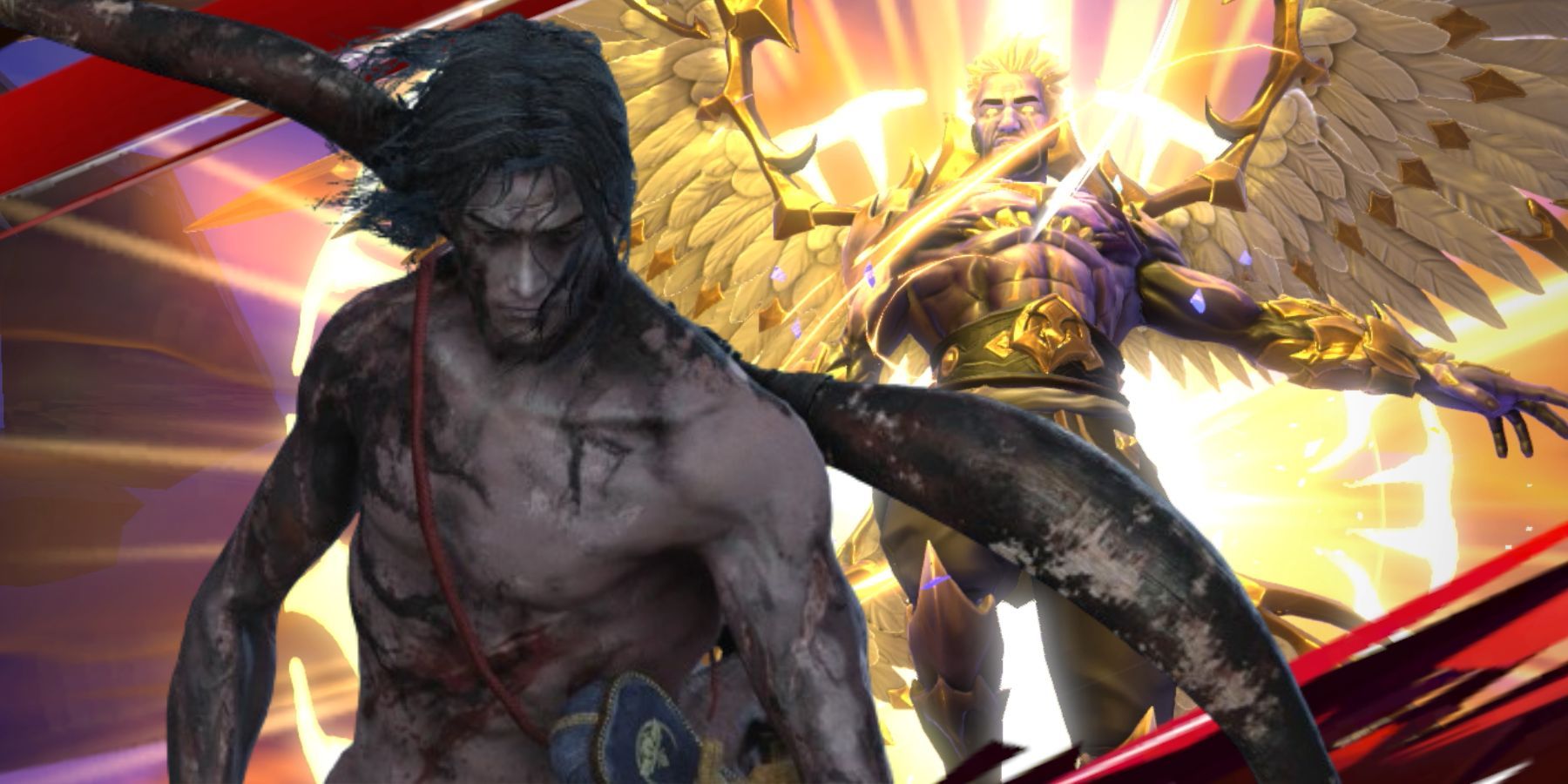Highlights
- Both Prince of Persia: The Lost Crown and Sekiro: Shadows Die Twice have similar boss structures, particularly in direct comparisons of how main antagonists Vahram and Genichiro are encountered multiple times and have initial fights players are intended to lose.
- The final boss fights in both games are elaborate and epic, with multiple phases and health bars to contend with. Vahram in The Lost Crown possesses time and space powers, while Genichiro in Sekiro allows his grandfather to emerge and fight the protagonist.
Major spoilers for Prince of Persia: The Lost Crown ahead.
The trendy Soulslike subgenre is rampant now and with such a wonderful foundation it hopefully isn’t going anywhere any time soon. Still, ‘Soulslike’ has certainly been tossed around liberally with regard to many games whose similarities are a bit of a stretch—Prince of Persia: The Lost Crown is not a Soulslike, for example. But it’s not hard to see where the influence of Soulslike design may have had a hand in some of the choices made for Ubisoft Montpellier’s 2.5D Metroidvania.
Like Hollow Knight or Blasphemous before it, modern Metroidvanias tend to lean on particular features prominent in Soulslikes, such as needing to recover valuables that drop upon death or checkpoints that recover health and respawn enemies. These aren’t features exclusive to Soulslikes, either, but where Prince of Persia: The Lost Crown might be most akin to FromSoftware’s work is how it structures its boss fights against main antagonist Vahram.

FromSoftware’s Next Game Needs a Take on Sekiro’s Most Unique Enemy
Sekiro: Shadows Die Twice features a type of enemy that disregards all former notions of what a traditional enemy needs to abide by in a Soulslike.
How Prince of Persia: The Lost Crown and Sekiro: Shadows Die Twice Intertwine
Prince of Persia: The Lost Crown and Sekiro: Shadows Die Twice couldn’t be more unalike in terms of their stories, and Vahram and Genichiro Ashina are barely comparable characters. Essentially, the two antagonists are similar on a design level in terms of how they’re approached as bosses: it’s scripted that players lose to them in their first encounter, followed by a tough but winnable second encounter later on, and at last they appear in a third encounter as final bosses where they evolve into a different form and have four distinct phases to battle through.
The Lost Crown’s Vahram and Sekiro’s Genichiro Share the Same Boss Structure
The Lost Crown’s Vahram is close to protagonist Sargon as they both belong to the Immortals, and therefore his betrayal and murder of Prince Ghassan is perhaps more alarming than when Genichiro first appears. Genichiro is also confronted early on in Sekiro, whereas players don’t learn of Vahram’s deception until a bit later in The Lost Crown. Both initial fights are intended for the player to perish since they’re under-equipped or under-leveled, but both fights are also winnable if players are skilled enough.
Unfortunately, both are also identical in the fact that beating the overpowered boss doesn’t result in a unique outcome and the same cutscene plays out of Sargon and Wolf being bested in The Lost Crown and Sekiro respectively.
The second fight, a rematch, is where there’s more variance between them in both The Lost Crown and Sekiro. The Lost Crown uses the same boss stage and the same first couple of phases from the initial Vahram boss fight because it technically is the same one. Here, Sargon has traveled to the past and confronted Vahram again to aid his past self in the first phase.
Sekiro has players’ second confrontation with Genichiro atop Ashina Castle (though the stage for their first encounter is returned to in the third fight at the end of the game). This time around, the fight includes a phase where he sheds clothing and employs the Way of Tomoe.
The Lost Crown and Sekiro Push the Envelope on Epic Final Bosses
The third fight for both bosses is then unsurprisingly the most elaborate, challenging, and epic. Vahram possesses god-like time and space powers, golden light, and a feathery pair of wings, flying across the screen and using fiery light abilities in four different phases, each one rewinding time and beginning the fight anew in a way.
Meanwhile, Sekiro’s Genichiro only plays a small role in the third encounter, slicing himself with the Black Mortal Blade to allow his grandfather, Isshin, to emerge and fight Wolf as the Sword Saint. Both boss fights last for four individual phases and four health bars players need to contend with, though Vahram’s fourth phase is far easier than Isshin’s since Sargon receives a huge power buff.

Prince of Persia: The Lost Crown
- Released
- January 18, 2024
- Developer(s)
- Ubisoft Montpellier
- Genre(s)
- Action , Platformer , 2D

/cdn.vox-cdn.com/uploads/chorus_asset/file/25547426/THBY_S3_UT_308_210825_SAVJAS_00055_1.JPG)






